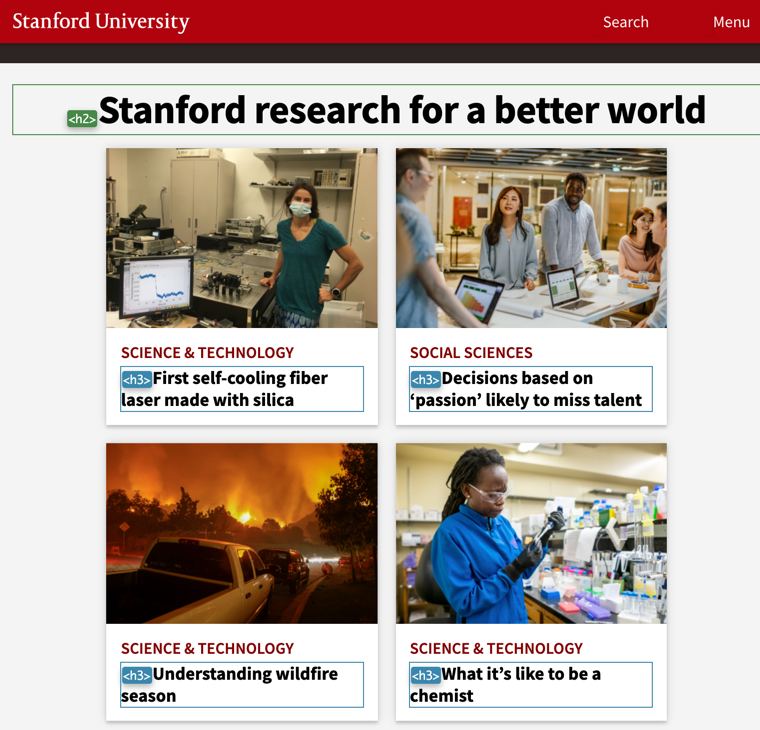Take a quick look at a newspaper, magazine article, or even a novel. At a quick glance, you can easily ascertain the title, the titles of articles, the "lead" story, and major sections of content. The visual design and layout for all of these media types presents an organized and structured format that allows people to find information quickly and easily. This same approach can be applied to electronic content to support accessibility functionality.
Headings
Organizing content prevents cognitive overload, providing information in digestible pieces for your students. Headings are valuable in presenting the main points of a section, by providing a logical structure for information, or allowing visitors to skim the contents.
From an accessibility perspective, headings provide individuals using screen readers with a simple method to navigate within a page or a document. A recent WebAIM survey of screen-reader users found that using headings remains the predominant method for finding web page information and that over 80% of respondents found headings very useful or somewhat useful when navigating content. The use of headings allows individuals to move and find information in a more efficient manner.
Using different heading styles and font sizes helps organize information into meaningful sections and demonstrates how subtopics relate to the main topics, and with one another. For example, a document structure could be:
- Heading 1 is the main topic or title of the content
- Heading 2 is used for major subtopics that relate to the main content
- Heading 3, Heading 4, and Heading 5 could be used to further refine related subtopics

For example, on the Stanford website, headings are used to indicate major sections and topics. The screenshot reveals the heading structure of the web page identifying heading 2 and heading 3 elements throughout the page. Not shown is the primary heading 1 of this page called Research.
General rules for headings
- The main title should always be formatted as Heading 1. Subsequent headers should be applied in descending order. Don’t skip heading levels. For Example: Don’t use Heading 3 for the main title, followed by a Heading 1, and then a Heading 4.
- Specify a heading element and then modify its appearance. Don’t use font size, bold, or underline features to create the appearance of a heading.
Lists
Lists neatly present related ideas and outline steps in a process. Bulleted and numbered lists can be used in documents to format, arrange, and emphasize text. For an individual using assistive technology, such as a screen-reader, the list format will communicate the presence and number of items in the list when navigating the content. This can help a person understand the overall scope of the list information and the number of items involved.
Bulleted List
If items are a group of equivalent ideas or terms, and the order is not an essential aspect of the concept, use a bulleted list. For example, the following is a list of basic accessibility practices for electronic documents:
- Organize material into usable sections
- Use styles to mark headings
- Use meaningful words to identify hyperlinks
- Provide text descriptions (i.e., alt text) for images
All of these accessibility practices are relevant to creating an accessible document. As such, a bulleted list can be used as it does not require a specific order or a sequence to follow.
Numbered List
If items are a sequence or a series of steps, use a numbered list. A numbered list is important when there are specific steps to perform as part of a process. For example, the following is a list of steps to take to login to email:
- Open your web browser
- Navigate to the email login page
- Enter your user name and password
- Press the Submit button
In this example, following a specific sequence of steps is necessary to completing the task successfully. When a specific order of operation is necessary to completing a task, then a numbered list is more effective in communicating those steps.
